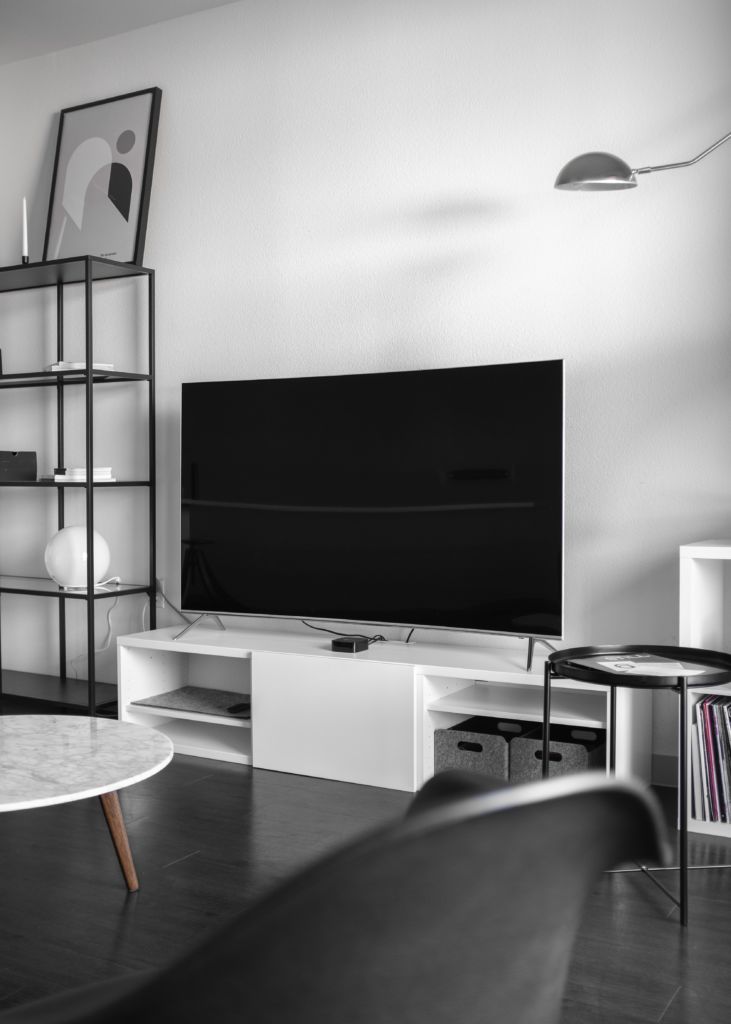What Makes Some TVs Look So Real? (Potential Reasons)
What Makes Some TVs Look So Real? (Potential Reasons)

Ever find yourself in front of a bunch of TVs in the electronics section and notice that some of the stuff playing looks a lot smoother than others — almost as if things are happening right there?
Or perhaps even a friend or family member’s house and notice the same thing with their TV?
Why is that though, why do some some TVs look so real?
There’s actually a few potential reasons why this could be, so let’s get right into it.
What Makes Some TVs Look So Real?
There’s a few reasons why some TVs might look realistic which includes, some kind of motion interpolation setting being enabled, it being in its most vivid mode, the TV itself being an ultra high resolution model, or perhaps it even being professionally calibrated. All of these things could factor into a television having a highly realistic image fidelity.
How Your TV Shows The Image
To explain some of the reasons why this is happening, I’d first have to quickly explain how your TV actually shows an image so things hopefully makes sense.
So basically to produce a moving image, your TV has to produce a certain number of frames within a second for it to have the appearance that there’s some kind of movement happening on the screen which is considered its refresh rate.
You’ll often see this in the form of a number with the letters Hz behind it which stands for hertz.
That’s just saying how many times something is changing in a second.
Interestingly enough, hz is used in sound as well as often being used when it comes to video too.
So if you see a TV that says it’s 120Hz, that means that the TV has support for displaying 120 of those frames every second it’s playing that content (provided that content supports it of course)
It’s funny because that caveat actually brings us to our first reason why the image might look the way that it does.
Reasons Why Some TVs Look Realistic
Motion Interpolation Or The Soap Opera Effect As It’s Often Called
Now with that said, the first reason why the TV you saw might have looked this way could be due to a pretty common setting based on the technology of motion interpolation.
Without making things too complex, motion interpolation, aka the soap opera effect as is it’s often called, takes whatever video source the TV is connected to, and with every second, it actually creates extra frames and puts it between the gaps of the frames that are already there originally.
This creates a somewhat artificial frame rate making it look almost reminiscent of a soap opera, hence the nickname.
But why would this be done?
Well the idea is if it’s a source that has a low amount of frames in a second, it might look choppy or jittery to some.
Or there might be some kind of motion blur present in the content.
So as a way that may help, these extra frames might allow the image to appear more fluent or smooth.
How effective it is in doing this though can vary wildly from my experience, since it depends on both the TV itself, and the Hz of whatever is actually playing.
And not everyone sees visual content in the same way so that can be a factor too.
Plus if the particular content playing isn’t a good match for the setting, that’s where you might experience visual anomalies.
It’s a setting within the TV menu that you might see that has a name involving something to do with words like motion, movement, interpolation, or something along those lines depending on the TV you have.
On the other hand, it’s also possible your TV may not have this setting at all, but again it depends.
But long story short, it’s this setting that could be causing things on the screen to look like they’re moving faster than usual, and it’s one that some people like, and some people don’t.
Depending on your preference, you can turn it on or off in the settings menu.
So if you do notice this on your content or on a TV in general, this could be one reason why.
It Could Be Set To The Vivid Mode In Settings
The next reason why the television may look like that is it could be set in some kind of dynamic or vivid mode.
Often times when a TV is on display in stores, to account for the sometimes harsh store lighting or even to be eye catching, it’s set into its brightest mode.
So with that, it could just be that the particular conditions the TV is in is making it look a certain way that some may find looks realistic to them.
One thing I do want to note is that the vivid mode may not be the best at home though, and that a standard setting with a lower backlight may be better for image quality and long time viewing.
The brighter it is and longer it’s on, the more it could affect the pixels & how long they actually last so that’s something to keep in mind.
Something else I noticed is that sometimes when switching modes, different settings that you may have had enabled or disabled might not apply to the newer one.
So if you enabled or disabled the motion interpolation setting mentioned earlier for example, it might have changed if you switched modes — so it’s something to remember.
It Might Be A Calibrated Screen
On the other hand, the opposite could be true too, and it could be that what you saw was a professionally calibrated screen.
Often calibrated by professionals to adhere to a visual standard for video, it could be that the screen’s picture quality was properly adjusted and represented this.
They’re set to a warmer picture setting which often gives the picture a more realistic look.
Even though it’s a more in depth process with calibration since it requires special tools for complete accuracy, there’s still ways to optimize your TV settings so things look better.
It Could Be In UHD Resolution
Perhaps it wasn’t just the way things moved on screen, but the clarity of the image itself too.
That could be where it might have been an ultra high definition or even 8K resolution screen — since these higher resolutions when combined with proper settings adjustments, can make for some truly incredible visual moments.
4K resolution, while not the standard across the board just yet, is still a lot more prevalent than it use to be and does look pretty stunning in person.
But in my opinion, I feel like 8K resolution is even a step up above that, and if someone’s never seen these before and then comes across an 8K resolution screen for the first time, I could see where the level of amazement could come from.
Some of the best TVs use these newer resolutions, and their resulting image quality is pretty amazing in my opinion.
The Best TVs
Final Thoughts
In summation, the way a TV looks can be affected by a variety of things, and if any of the factors mentioned earlier apply, then that could be the reason the TV looks the way it does.
Hopefully that helps shed some light on things and you now have a better idea why that might have been.
Until next time make it easy, keep it simple!
About Me

Jay
Hey everyone it’s nice to meet you. I'm Jay, writer & founder of the site Easy Home Theater. I've been with this hobby of home entertainment for many years now. I decided to create this site to be a helpful resource, and share everything that I've learned from personal experience with you. I also happen to be a huge gamer, lover of all things tech related, and a major fitness buff (love weightlifting)
Contact: Contact Jay
Facebook: https://www.facebook.com/Easyhometheater/
X: https://x.com/easyhometheater
Pinterest: https://www.pinterest.com/easyhometheater/pins/
Instagram: https://www.instagram.com/easyhometheater/
Followit: https://follow.it/easy-home-theater
Bluesky: https://bsky.app/profile/easyhometheater.bsky.social





Leave a Reply